Hallway design in a private house
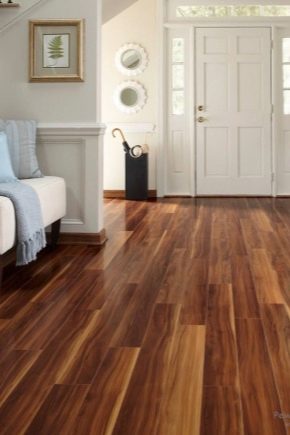
The entrance hall is the first room of any home, and its appearance should create a pleasant impression, set the mood. Its design should not differ much from the design of other rooms in the house, so it is important to maintain the unity of style. Apart from the appearance, a lot of attention needs to be paid to the functionality of this part of the house.
Every centimeter of it should be useful to the owners, because the area is not so large as to be exchanged for unnecessary decorating attributes that will only clutter up the space.
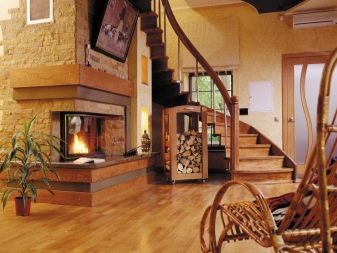
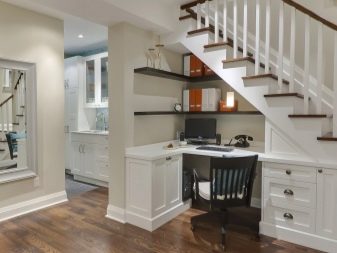
Design features
Private houses are not similar to each other as well as apartments, and differ in layout. Therefore, when designing a design, each individual case must be considered. But still, there are several common types of hallways in houses:
Narrow and long corridor
With such a layout, all the details of the room should work to visually expand the area. Light shades of walls and ceilings, glossy surfaces of the ceiling, furniture are well suited for this; mirrors, horizontal stripes on the walls, diagonal stripes on the floor.
A small hallway must be well supplied with lighting.
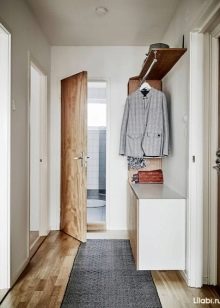
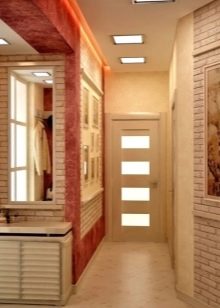

The light should be close to natural, not irritating. You can use multiple spotlights on the ceiling, wall sconces, or a small chandelier.
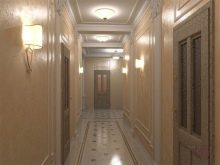
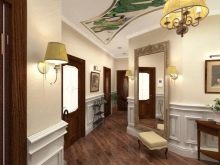
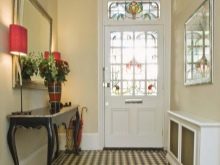
A narrow corridor can be zoned: to distinguish the entrance and lobby areas. This can be done by using different materials or colors to decorate the floor, ceiling and walls. For example, decorate the area near the door with stone, and use wallpaper, paint, laminate for the rest.


The house may have a split-level floor. Thus, an ordinary hallway turns into a porch hallway, and there is no need to allocate zones, they are already formed.
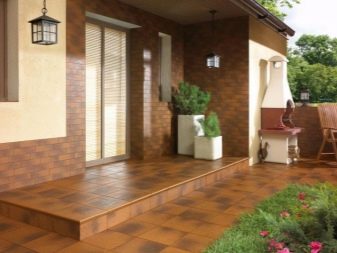
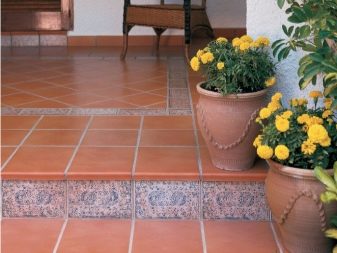
Wide and small hallway
Visual expansion is no longer required. On the contrary, you can visually narrow the space. For this, vertical stripes on the walls, dark colors of the finish are suitable. You can use paint or decorative plaster.

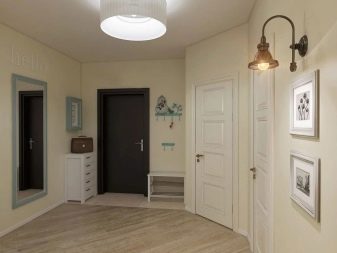
In modern private houses, several doors are often located in the entrance area, leading to different parts of it: to the bathroom, living room, garage, kitchen. A large number of doors and doorways require a lot of space. These hallways are usually spacious, but the arrangement of furniture still needs to be well thought out due to the large number of passages to other rooms.
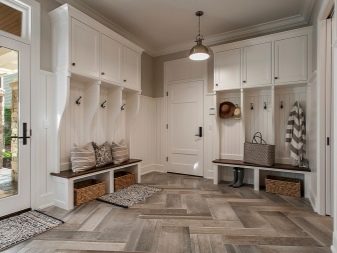
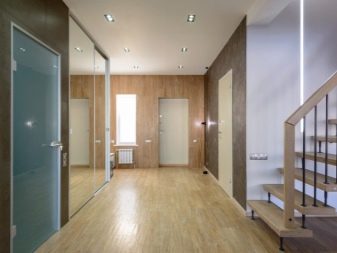
If the house is bunk, there is usually a staircase to the second floor right at the entrance. Sometimes you can arrange a pantry in it, for example, for outdoor equipment, or a place to store shoes. It is very convenient in terms of space saving.
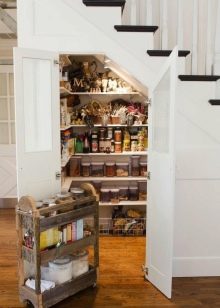
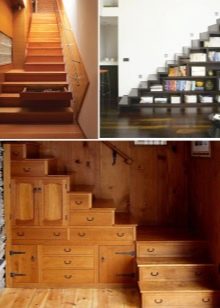

Hallway-living room
There are layouts in which a separate hallway is not highlighted. And at the entrance, the hosts and guests find themselves in the hallway-living room. In this case, zoning is simply necessary. The part at the entrance must be highlighted with color or other decoration. This will also be required if the hallway is combined with the hall.
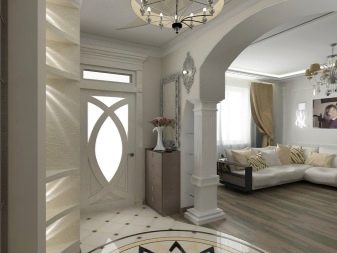
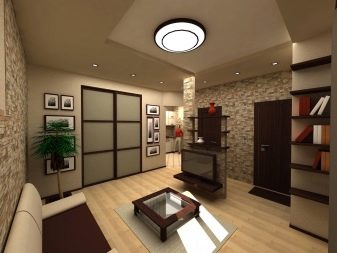
Tambour
In an old village house, you can find a vestibule-vestibule. It is, as a rule, small, cold, since it is not heated. Designed to take off your shoes and leave outer clothing. Here you can put several shelves for shoes, a forged hanger for outerwear, a bench, cover the floor with tiles, decorate the walls with decorative plaster. The use of natural shades will be appropriate.

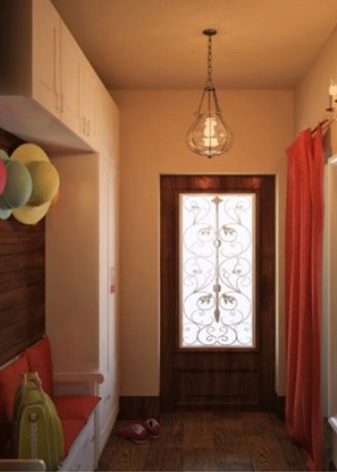
Choice of materials
You choose the materials depending on your financial capabilities. Although, of course, it is better to take care of the quality of the finish and think about the rationality of its use.
Since dirt is often collected in the hallway, which is carried from the street, it is necessary to trim it with easily washable materials.
It is best to lay ceramic tiles on the floor (it is good if the floors are heated). If it's too expensive, use laminate flooring. Linoleum is also possible if it is of good quality.


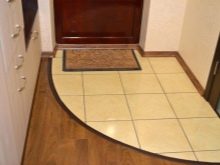
In a private house with high ceilings, you can use multi-level structures. For example, a three-level plasterboard ceiling. With a suitable height, a suspended version can also be selected. In either case, you can hide the wiring, which will provide good lighting.
There is a large selection for wall decoration: panels, wallpaper, paint, decorative plaster. The main thing, again, so that this surface can be washed easily and quickly.

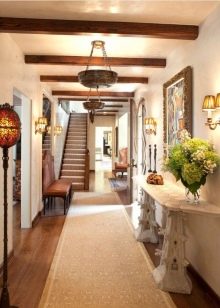
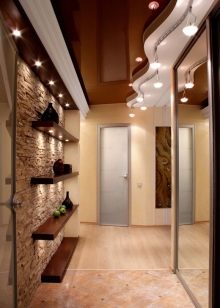
DIY interior decoration
You need to start decorating the hallway with drawing up a project. Before proceeding directly to the repair of a room, you need to depict its arrangement on paper or on a computer. It's a good idea to consider a few rough drafts. You will always have time to decorate the corridor, but it will be difficult and costly to correct shortcomings, errors in calculations or unsuccessful finishing.
In order to properly equip the hallway, you must first of all measure its length and width, the height of the ceiling, choose the necessary furniture, arrange it on the sketch as you would like to see the arrangement in the room itself.
Based on the area of the corridor, you need to choose the optimal size of each piece of furniture.
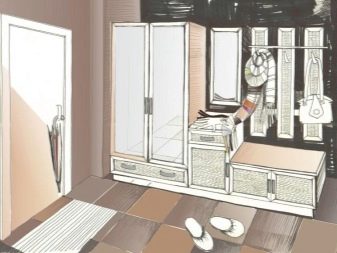
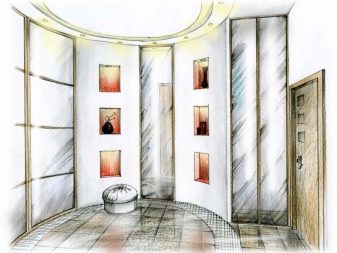
As for the finishing of each surface, do not forget that the entrance hall is a place of accumulation of street dirt, dust, melted snow, and materials must be selected so that it is easy to clean.
Walls
A great responsibility falls on the walls of the hallway. It is on them that attention is focused, the finish and colors of the floor and ceiling also depend on them.
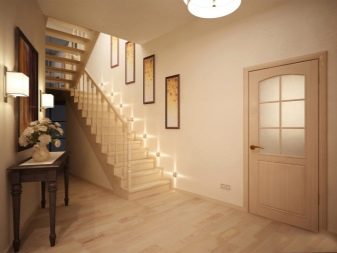
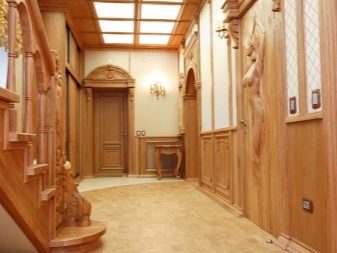
It is better not to consider paper or textile wallpaper as a finish right away. Even the highest quality ones in the entrance area will quickly deteriorate. You can decorate the walls of the hallway of a private house using the following materials.
Panels are a pretty convenient way to decorate walls. Doesn't take a lot of time. Panels are easy to mount. There are three types: tiled, slatted and sheet. The choice depends only on the preferences of the owners. Among the materials of wall panels: MDF, PVC, wood, plastic, fiberboard and chipboard, mirror polystyrene, cork and bamboo, glass, stone.
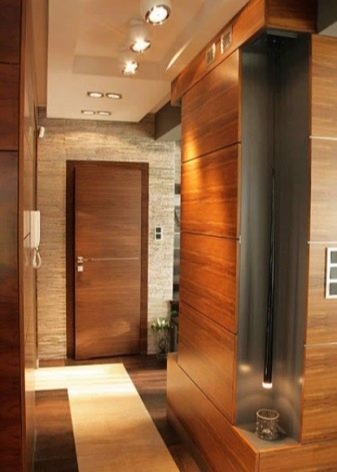

When choosing materials, remember that the walls of the hallway often suffer from external influences: someone accidentally touches the sole of their shoes, scratches a metal insert in a bag, drops of water from clothes or an umbrella fly onto the walls in rainy weather. Pets, such as cats, can also affect them. Therefore, choose a material that is resistant to mechanical damage, moisture resistant, easy to clean and, preferably, resistant to fire.

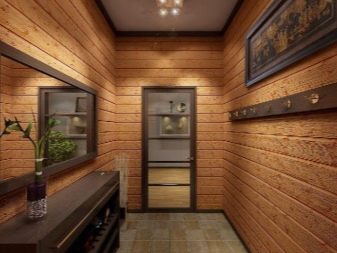
It is quite appropriate to combine both materials and types of panels. For example, one wall can be trimmed with bamboo linen, and the rest - with MDF. The surface near the ceiling can be decorated with splashes of mirrored polystyrene. And stone trim always looks impressive and solid.
An interesting option for finishing is in which only the lower part of the wall is sheathed with panels somewhere in the middle, and the upper one is decorated with wallpaper or painted. The joint is closed with a molding.
When choosing, think about the environmental friendliness and moisture resistance of the material.
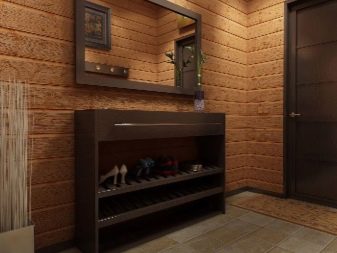

Other materials include the following:
- vinyl wallpapers. Their advantage over paper ones is that they are washable. They are easy to glue, they are durable, dense, and the choice of colors and patterns is huge;
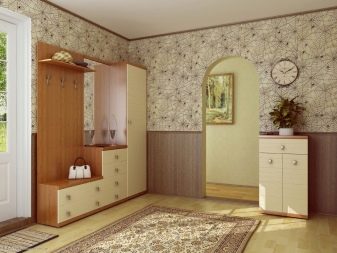
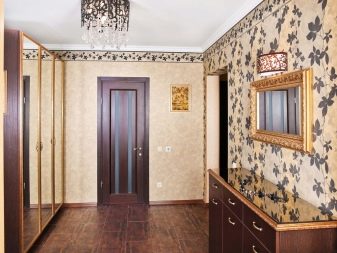
- the liquid wallpaper. This option is good because you can easily arrange a surface of any complexity - with arches, bends, etc.Liquid wallpaper is varnished, and further maintenance of the wall is a simple washing;
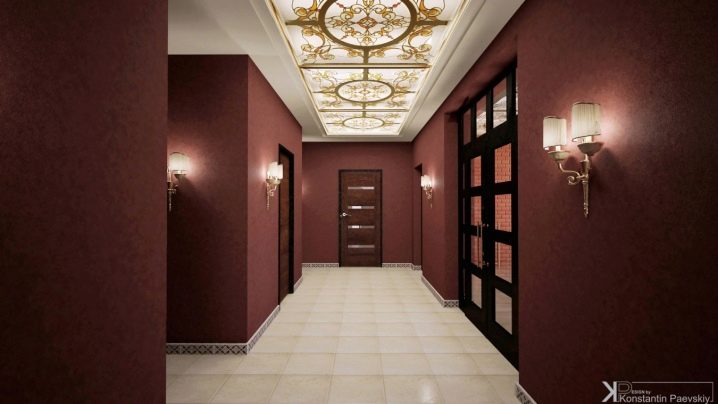
- decorative plaster. Today this material is widely used for the embodiment of many design ideas. The composition includes a binder and special additives, due to which the coating can take on various configurations, imitating wood, sand, cork, natural stone and more. The application process is simple, no special wall care is required. The coating will last a long time, and the assortment of colors is good news.
- dye. The method is quite simple, inexpensive, but a perfectly flat surface is required. Before painting, you need to carry out a number of finishing works with the wall, one of which (more precisely, the final one) may be the installation of wallpaper for painting. If you choose wallpaper for coloring, make sure that it is dense enough and has a deep embossed pattern. You can repaint such a surface from about three to seven times.

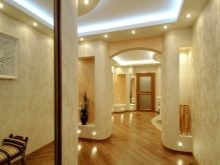
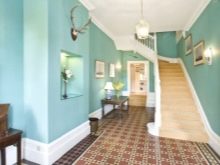
As for the color scheme, light colors are not a very good option for a hallway in terms of practicality. Do not forget that the walls will constantly get dirty, and a bright, clean hallway will not remain so for long. But if the corridor needs to be visually expanded, light shades are necessary. Then take care of moisture resistant materials.
Also, as already mentioned, the lower part, which will mostly get dirty, can be trimmed with dark panels, and the upper one with light wallpaper.
For the hallway of a private house, natural colors, wood trim are relevant.
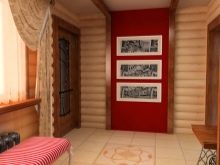
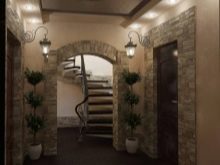
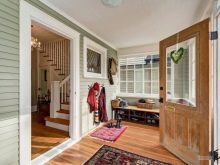
If you want to experiment with color combinations, remember that no more than three different shades should be combined in one room for normal psychological perception. Two can contrast, the third should be neutral.
If you are a large original and are not afraid of color pressure, a fresco or painting may flaunt on one of the walls of your hallway. The use of photowall-paper is possible.


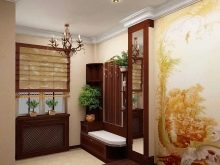
Often a small part of the wall is painted with a bright color to outline the functional area. For example, there may be hooks for outerwear or a shelf for shoes.

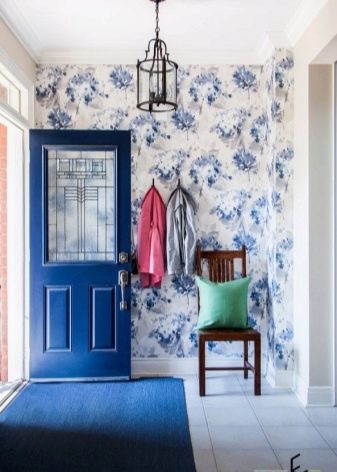
Floor
The floor in the hallway is exposed to heavy stress, and the coating is exposed to mechanical damage: heavy bags and bags, heels, sometimes street equipment, strollers, bicycles, and so on. Therefore, the surface must be durable, wear-resistant and moisture-resistant. There are the following flooring options:
- tile. Mostly porcelain stoneware is used. This is the most durable material, it does not deform, does not deteriorate from water, and is easy to clean. Tiling is a reliable and durable finishing method. The pleasure is not cheap, but it is better not to save money on finishing the hallway. Combinations can also be used here. For example, lay out the area at the door with tiles, and cover the rest with linoleum or laminate;
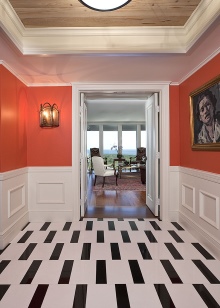
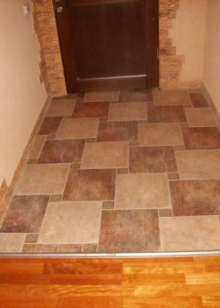
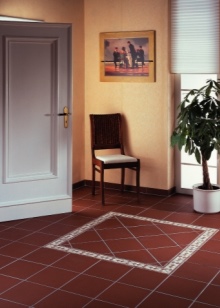
- laminate or parquet... It always looks good and stylish, because this is a tree, but you need to pay special attention to quality when choosing. The material must be resistant to moisture and mechanical damage, otherwise it can deform, and swell from water. This finishing option also cannot be called budgetary;
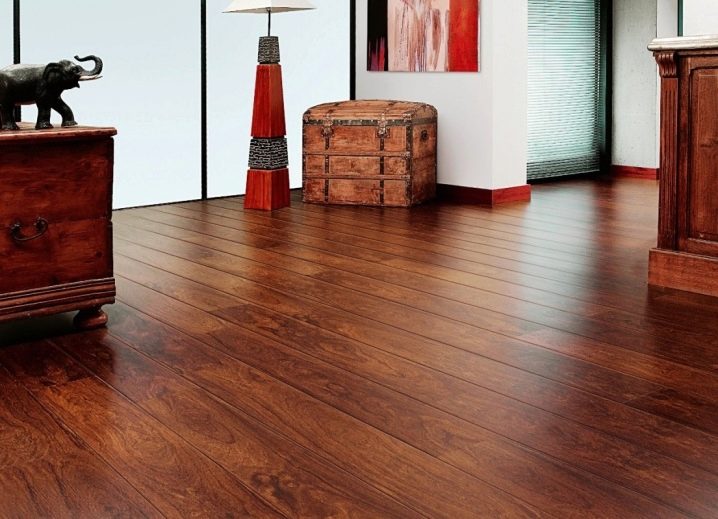
- linoleum. The most financially acceptable coverage. Linoleum is easy to care for, it can be called wear-resistant. The huge selection of colors and textures is also pleasing. Please note that household linoleum is not suitable for the hallway, as it is easily exposed to mechanical damage and deteriorates.
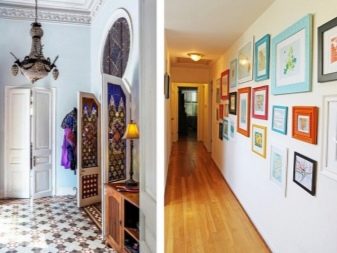
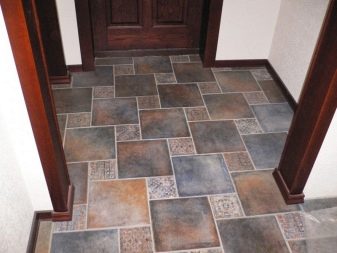
In winter, the floor in the hallway will be constantly exposed to the so-called "water attacks". Snow brought in from the street will melt and form puddles. Therefore, it is worth considering floor heating. Puddles will not stagnate and shoes will dry faster. In addition, if tiles are chosen as the flooring, the floor will be cold, and additional heating will not interfere.
The color of the floor is usually darker than the color of the walls. A stylish solution is the floor in the form of a checkerboard. But this must necessarily fit into the overall design of the room, complement it, and not spoil it.

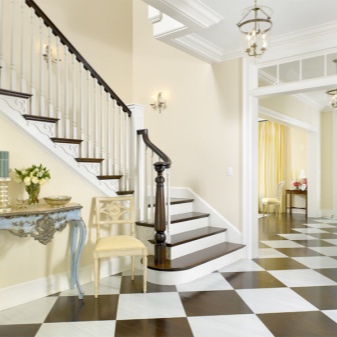
Ceiling
Finishing is possible with the following materials:
- decorative plaster;
- dye;
- whitewash;
- wallpaper;
- ceiling tiles.
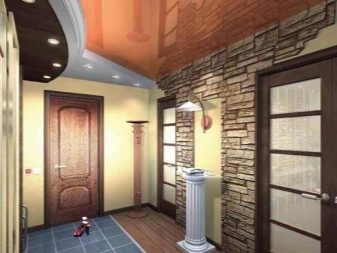
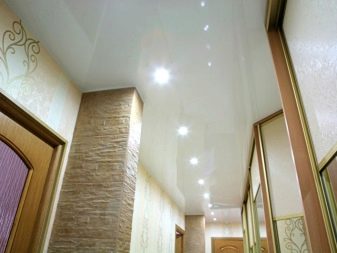
If you do not dare to trim the ceiling yourself, you can resort to other options:
- Stretch. It is easy to look after him. It turns out to be perfectly flat. You can choose a matte or glossy finish. The reflective property of the latter will create a visual effect of spatial expansion.
- Suspension. The structure is created using plastic panels. You can hide the electrical wiring behind it. This design is appropriate if the ceilings are high, since the suspended structure eats up space.
- Multilevel plasterboard ceiling. It can be a one-level smooth surface, a two- or three-level structure. It also depends on the height of the ceilings and on the desires of the owners.
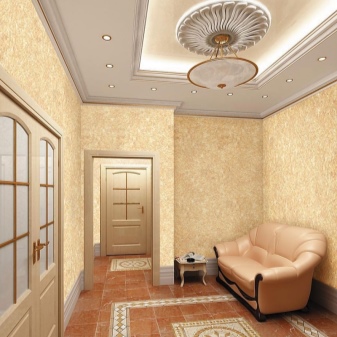

Before installation, it is worthwhile to think carefully about the lighting: how many lamps there will be, what sizes and where they will be located. Various options are possible:
- several spotlights around the perimeter of the ceiling;
- three or four bulbs in the middle;
- one small chandelier;
- wall sconces.
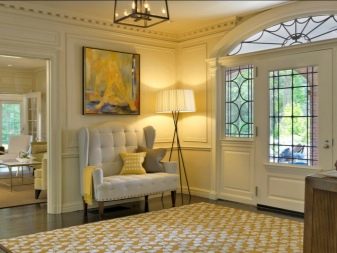
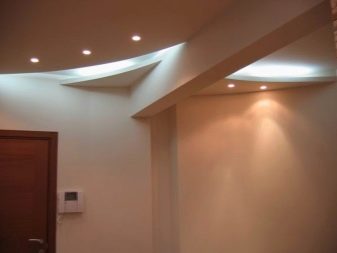
An LED strip can be used as additional lighting and a decorative element. It is recommended to choose shades that diffuse light. The color of the ceiling is usually lighter in relation to the walls. But if the hallway does not suffer from a lack of space, you can also try dark shades.

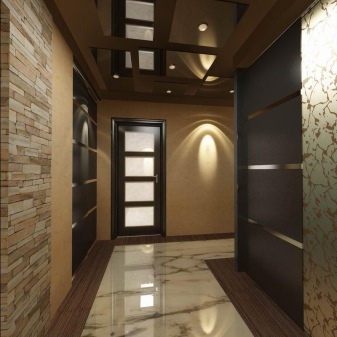
Furniture selection
If the hallway is small, do not clutter it up with a lot of furniture. It is necessary to choose and furnish only the most necessary things. For example, you can refuse a wardrobe for outerwear. Hooks on the wall or a wrought-iron hanger will be enough.
You definitely need to find a place for a shoe rack. It can be a cabinet, chest of drawers or whatnot. A space-saving option is a shoe rack combined with a bench.
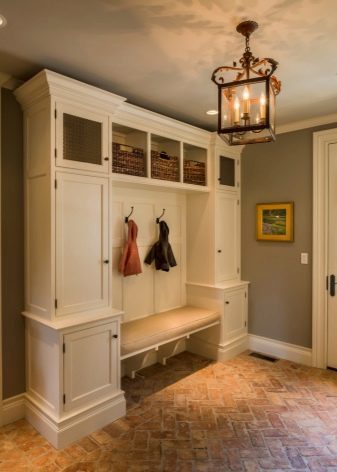
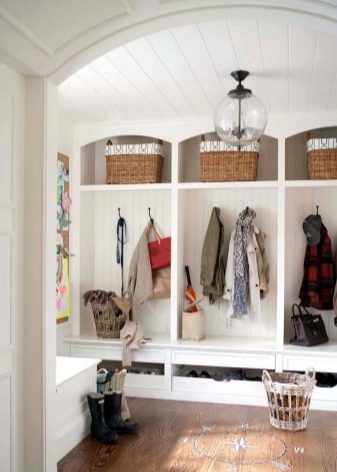
If you can't refuse the cabinet, you can install a body structure that combines both a cabinet and a mezzanine, a hanger, a curbstone, a bench and a shoe rack. There are different options. The use of modular furniture is also acceptable.
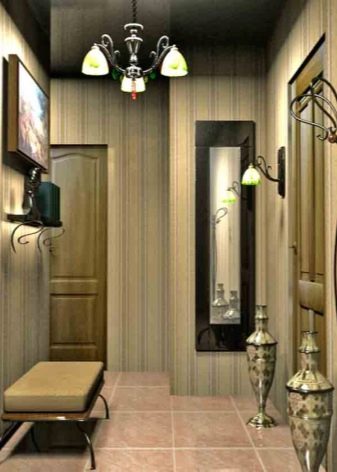
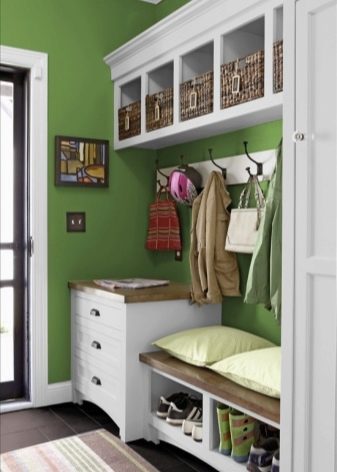
If there is enough space in the hallway of your house, then you can give free rein to imagination and desires. But be careful. The room should not be cluttered.
If possible, a console table by the mirror can be added to the main pieces of furniture. It will perfectly accommodate accessories, phone, cosmetics, hairbrush and more.

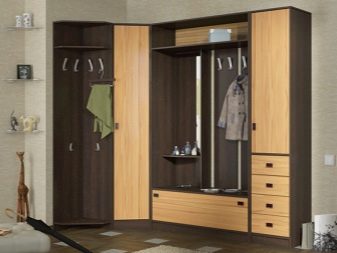
It would be nice to put a small armchair in which you can relax or wait for those who are gathering.
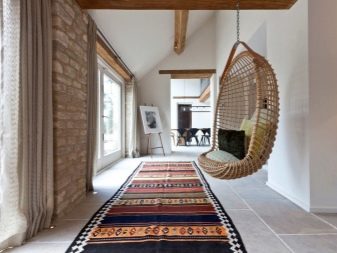
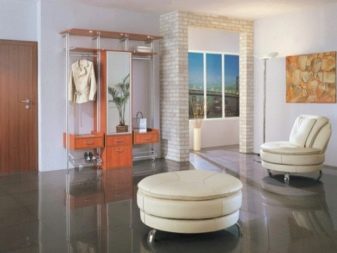
Modern ideas
When the most difficult finishing work is done, the most beloved remains - the decor. Here you can show your imagination, or you can turn to the designer for help. In any case, decoration is an indicator of your taste and sense of style. After all, even if you turn to the help of a professional, the last word remains with you.
If there is a window in the hallway, you need to think about curtains. In color, they should be in tune with the general palette. It is appropriate to use bamboo or metal blinds. It is modern and trendy.
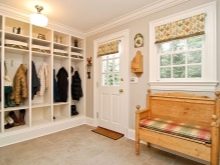
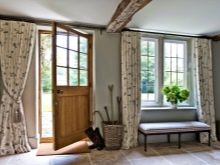

An indoor flower or even a couple will perfectly fit on the windowsill. If you have extra centimeters in the room, you can put a large houseplant or an impressive vase on the floor. In general, fresh flowers in bowls perfectly complement the interior.

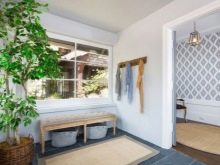
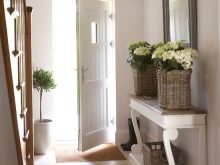
A mirror can be not only a functional item, but also become an element of decor when choosing a stylish, beautiful frame. You can also install additional lighting near or opposite it.
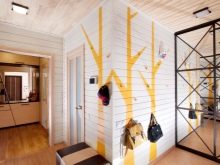
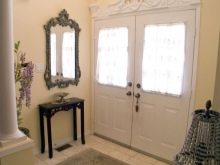
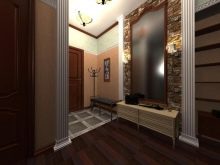
Small lamps are often mounted in protruding niches or in the floor.

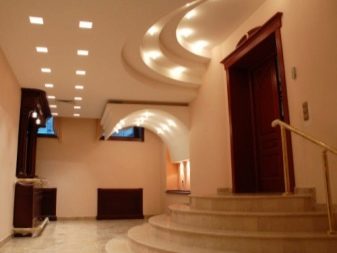
You won't surprise anyone with a wall clock, but try it anyway by choosing a model with an interesting design.
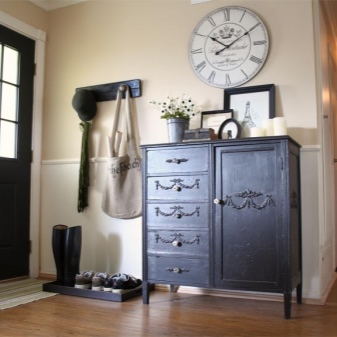
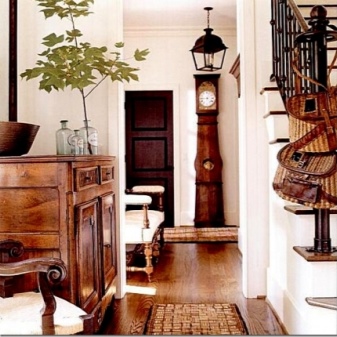
An original solution would be to place a small chalk or magnetic board at the front door or on it for different notes to household members.
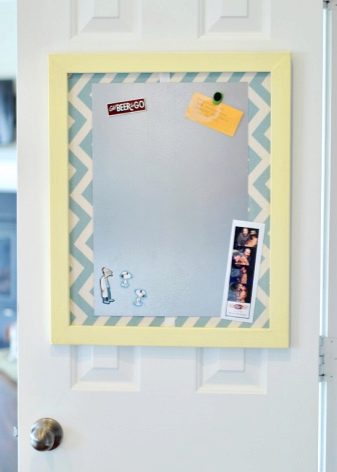
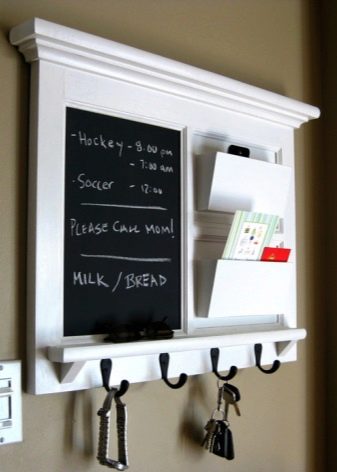
Wicker baskets or boxes will perfectly fit into the interior of the hallway. They can store various necessary little things.
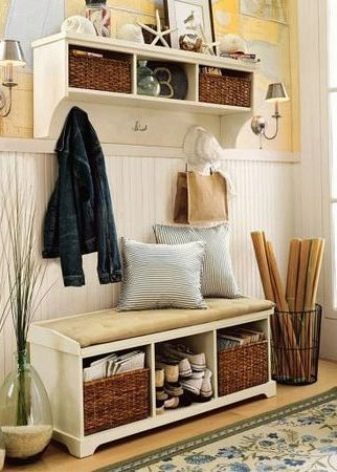
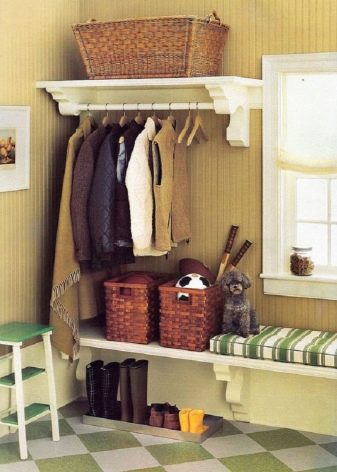
Hang key and bag hooks on the wall. Original and practical.
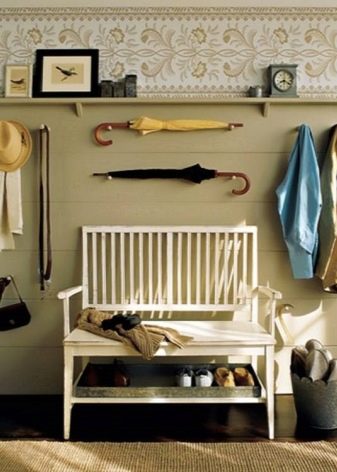

Walls can be decorated with paintings or photographs in stylish frames. Some of them can be highlighted.
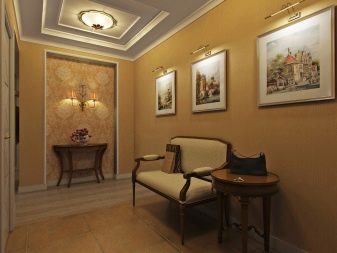
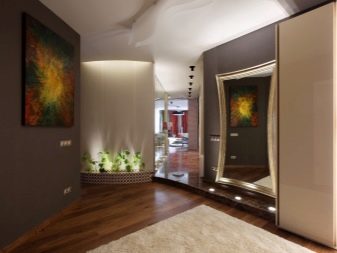
The umbrella stand is appropriate if the umbrellas are of the "cane" model. Otherwise, they can be stored in a chest of drawers or hung on hooks.
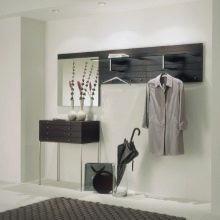
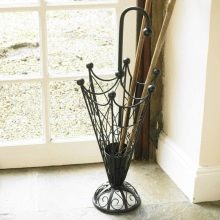
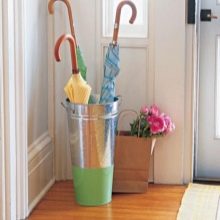
It is in a private house that it is appropriate to use wrought iron furniture. It is very beautiful, original, a tribute to the classics. In addition, the interior becomes unique, unrepeatable.
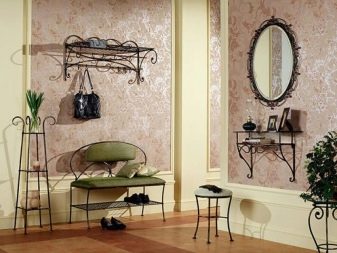
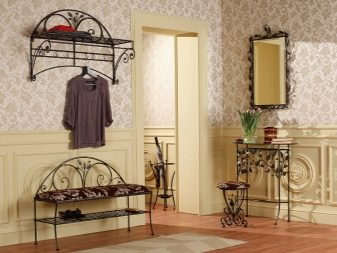
Do not be afraid to connect your imagination, to embody the most daring ideas into reality. You have the right to equip your home to your liking.
For information on how not to make mistakes in the design of a hallway in a private house, see the next video.













The comment was sent successfully.